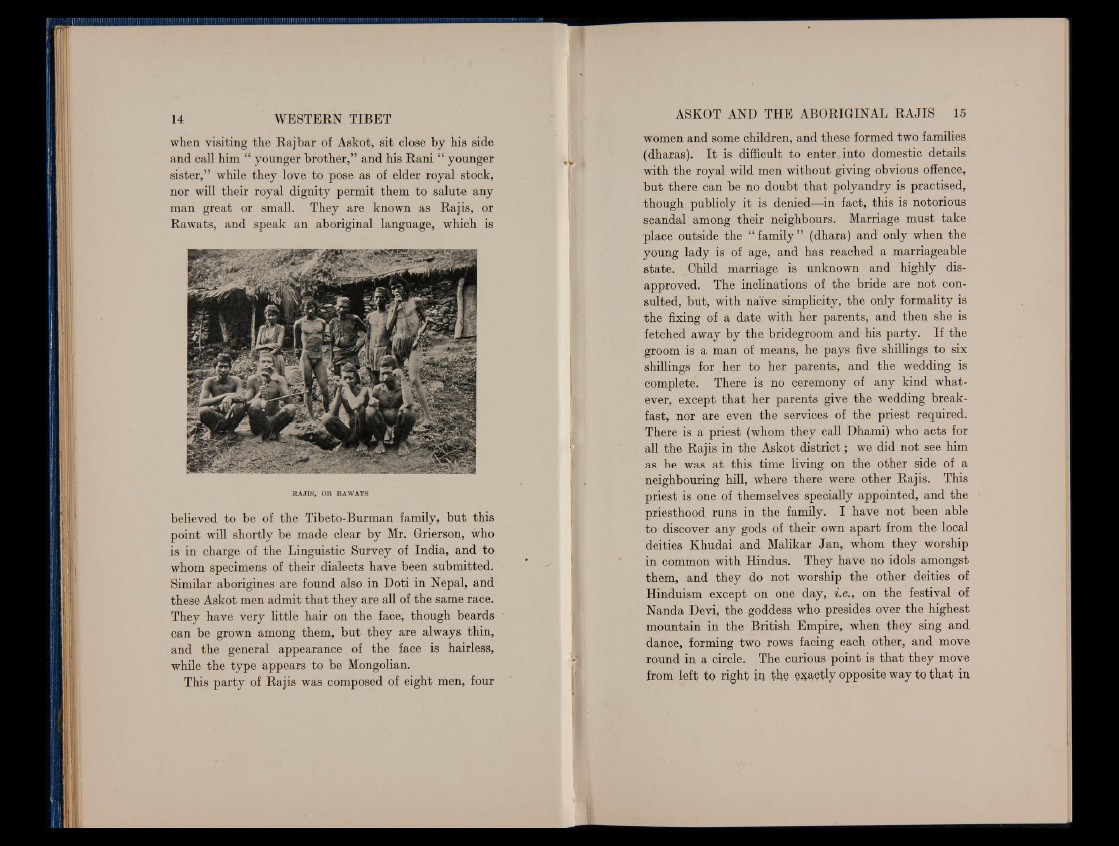
when visiting the Raj bar of Askot, sit close by his side
and call him “ younger brother,” and his Rani “ younger
sister,” while they love to pose as of elder royal stock,
nor will their royal dignity permit them to salute any
man great or small. They are known as Raj is, or
Rawats, and speak an aboriginal language, which is
R A J IS , OR RAWATS
believed to be of the Tibeto-Burman family, but this
point will shortly be made clear by Mr. Grierson, who
is in charge of the Linguistic Survey of India, and to
whom specimens of their dialects have been submitted.
Similar aborigines are found also in Doti in Nepal, and
these Askot men admit that they are all of the same race.
They have very little hair on the face, though beards
can be grown among them, but they are always thin,
and the general appearance of the face is hairless,
while the type appears to be Mongolian.
This party of Raj is was composed of eight men, four
women and some children, and these formed two families
(dharas). I t is difficult to enter- into domestic details
with the royal wild men without giving obvious offence,
but there can be no doubt that polyandry is practised,
though publicly it is denied—in fact, this is notorious
scandal among their neighbours. Marriage must take
place outside the “ family” (dhara) and only when the
young lady is of age, and has reached a marriageable
state. Child marriage is unknown and highly disapproved.
The inclinations of the bride are not consulted,
but, with naive simplicity, the only formality is
the fixing of a date with her parents, and then she is
fetched away by the bridegroom and his party. If the
groom is a man of means, he pays five shillings to six
shillings for her to her parents, and the wedding is
complete. There is no ceremony of any kind whatever,
except that her parents give the wedding breakfast,
nor are even the services of the priest required.
There is a priest (whom they call Dhami) who acts for
all the Raj is in the Askot district; we did not see him
as he was at this time living on the other side of a
neighbouring hill, where there were other Rajis. This
priest is one of themselves specially appointed, and the
priesthood runs in the family. I have not been able
to discover any gods of their own apart from the local
deities Khudai and Malikar Jan, whom they worship
in common with Hindus. They have no idols amongst
them, and they do not worship the other deities of
Hinduism except on one day, i.e., on the festival of
Nanda Devi, the goddess who presides over the highest
mountain in the British Empire, when they sing and
dance, forming two rows facing each other, and move
round in a circle. The curious point is that they move
from left to right in the exactly opposite way to that in